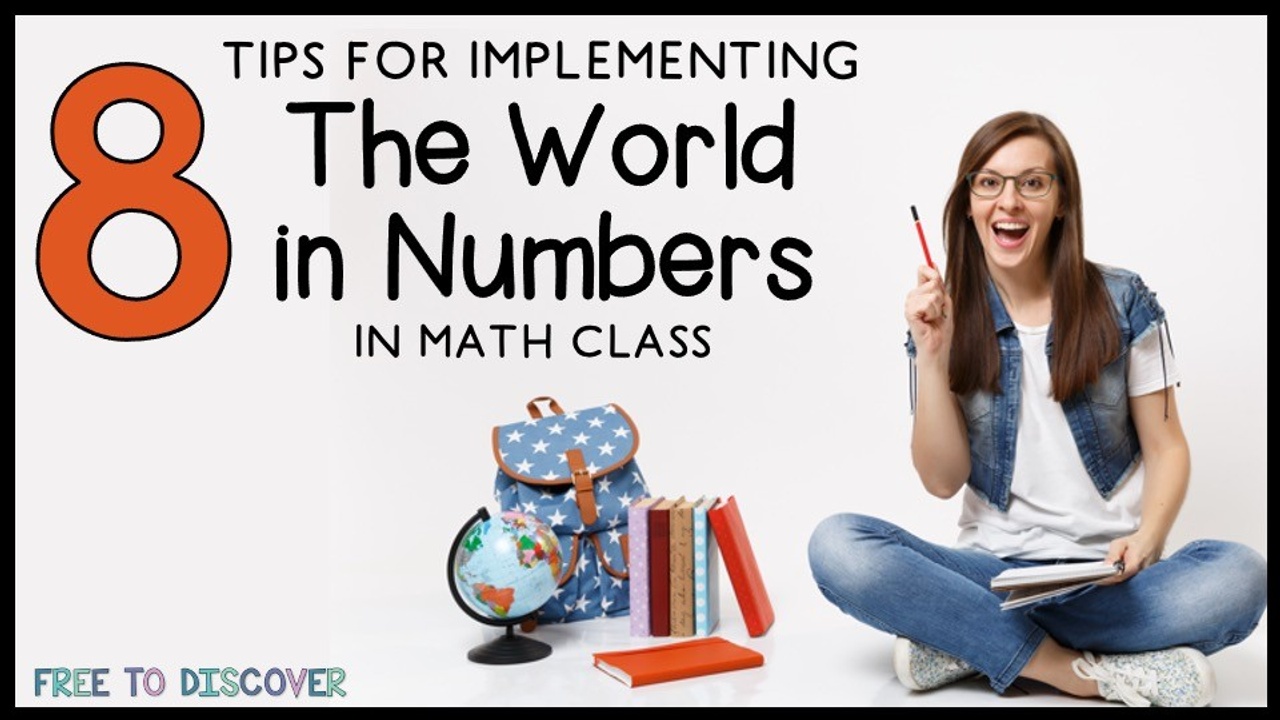
8 Tips for Implementing The World in Numbers in Math Class
Hello, friend! You've subscribed, accessed The World in Numbers, and read all about the importance of real world math, higher order thinking, and brain-based learning, but you're still not sure how to incorporate The World in Numbers monthly math newsletter for teens into your actual classes. In today's post, I'm sharing 8 concrete and actionable tips that are working for me and my students right now.

Utilize the Resource Guide
Included in bundle purchases, the Resource Guide outlines the math concepts, key vocabulary and supported standards for each issue. In my adult education credit recovery class, I use one new issue each week because I am looking to provide exposure to a number of math concepts and increase engagement by connecting with students over relevant topics. However, in my Algebra 1 classes I use the Resource Guide to scan for relevant standards and pinpoint the perfect issue to supplement my lesson. Choose the method that is right for your class.

Use as a Math Center
I've used this resource as a whole class activity and in math centers and the latter is my preferred method. Recently, I planned three activities to encompass the class period, one of which was an issue of The World in Numbers. I set a timer for 20 minutes and students got to work at their station. I checked in with each group to assess comprehension and further the small group discussion, but overall they worked independently and did a great job.

Distribute Highlighters
As math teachers, we might not do a ton of work with reading comprehension; certainly not like our counterparts in the humanities. So I'm adding this tip as reminder that highlighting is a great strategy for identifying key concepts and vocabulary. I advise students to highlight numbers that look important and facts that they find interesting. I highly recommend these colorful beauties if you need to freshen up your highlighter stash. (Disclosure: This is an affiliate link. As an Amazon Associate, we may receive a commission from Amazon at no additional cost to you.)

Frame the Task
Before you begin, hook students in by opening a casual discussion about the broad topic. Ask questions about what they already know or don't know about the topic. Ask where there might be math involved in the topic. Then take time to set forth expectations for students. Include both written and verbal steps and be very clear in what you're asking of students. To frame the task, you are providing a big picture as well as a roadmap for what successful completion of the activity should look like.

Pause and Discuss Key Ideas
The articles can be overwhelming for students when they see the length of the two-page newsletter. You might consider asking students to pause halfway through and share one key idea with a partner. The questions in the margins are set up such that they correspond with the content on that side of the page. In most cases, it would make sense to have students read the first page and answer those questions, then continue to read the second page and answer those final questions. Whenever discussing as a group, allow a flexible conversation. These discussions surrounding the topic will help solidify understanding by providing additional context.

Provide Enough Time
Set aside plenty of time so that students can maximize their comprehension of the big ideas and math skills. Depending on the needs of your students, this could be anywhere from 15-30 minutes. I encourage students to read through the entire article once; highlighting as they read. Then return to the beginning to answer questions; citing information in the text as they work. From this point, discuss material and content from the article in small groups or as a whole class.

Facilitate Conversation
You know your classes. Will they run wild with interest and conversation? Will they sit silently and wait for others to speak up? My two Algebra 1 classes could not be more different this year! Facilitate the conversation as needed. Provide clear instructions, keep students on track, and ask probing questions. You might consider assigning jobs within the group to keep the conversation rolling without your intervention.

Connect Math Concepts to Curriculum
The impetus behind this newsletter was to answer the question "When are we ever going to use this?" In your conversations with students, be sure to allude back to the skills you have been working on in class to make clear the connection between their school work in the application in the article. Don't assume they'll make the connection on their own. Use this newsletter tool to your advantage.
Join the Free to Discover community!
When you subscribe, you'll access Issue 1 of our monthly newsletter for secondary math students!

